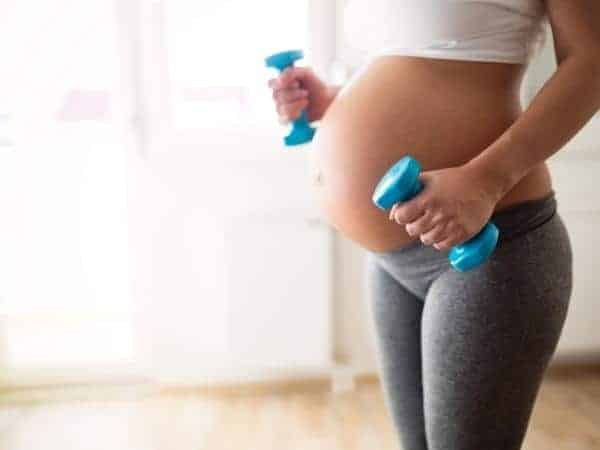Staying active during pregnancy
A guest post from Ben, Head PT at London Fitness Mamas to help you stay active during pregnancy.
First of all, congratulations on your pregnancy. The journey ahead is a special one but also a unique one, what may occur or help one mother may not be the best advice for you.
I will do my best to give you some overall tips for staying fit and active. But as with any online fitness advice, take it in but seek professional help to make sure it suits your personal journey and goals.
The following tips are dependent upon you having a safe pregnancy with no complications. If you have any further questions on your pregnancy then either ask a qualified pre and post-natal PT, a Women’s health physio or get in touch with your doctor.

Can you still exercise throughout pregnancy?
As you will start to see there is a common theme with my answers but the answer, in short, is yes, you can exercise throughout pregnancy.
Although it will depend on what you were doing before you conceived. If you were a real gym bunny getting in 3+ sessions a week, then you will be able to continue exercising for as long as you feel comfortable.
The exercises will have to be modified as you move through your trimesters. But I have had some mothers still performing a deadlift move at 38 weeks pregnant.
How long you exercise throughout your pregnancy is completely down to you. Obviously the longer you can keep training the better it will be for your health, energy, birth and recovery but in reality, you just may not feel like training.
Your body is great at letting you know what it wants to do and remember your body is working 24/7 growing a little human.
So don’t stress if you either miss a training session or you just don’t want to train anymore throughout your pregnancy.
What exercises shall I do throughout pregnancy?
Again, it depends. What were you doing before pregnancy, what do you need to work on, what are your goals and what is your body comfortable doing now you are pregnant.
As stated previously you may be able to continue with a full-strength programme the whole way through. Or you may need to adjust and do more prenatal yoga/pilates sessions.
Swimming may be fantastic later on into your 3rd trimester to take the weight of the bump off a little while you train.
You may just want to increase your step count and get longer walks in.
Don’t feel like you have to stop doing strenuous exercise and movements but do listen to your body. And where possible work with a pre and post-natal coach to guide you on your journey.
Walking
Get those steps in now! Walking is fantastic for health in general but for pre and post-natal women, it is such a simple solution to wellness.
You will most likely be walking around with the baby once it comes along for naps. It’s also great to just get you outside your home to clear your mind and get some fresh air. It can be so tough being with the baby 24/7, Stockholm syndrome, anyone?
There may well be issues regarding walking like Pelvic Girdle Pain, lower back issues or just general fatigue. So again, please don’t push it; listen to your body but do what you can to get those steps in.
As a general guide, I try to get people aiming for 9,000-10,000 in trimester 2, 6,000 – 7,000+ in trimester 3 and 7500+ in trimester 4.
KEGEL!
Throughout your pregnancy is a great time to get into the habit of doing your pelvic floor work. If you can, you want to look at adding them to your strength exercises and with your movements.
Get your pelvic floor used to being put under strain from different positions. Rather than just sat down trying to hold in a wee, can you draw up the pelvic floor at the end of a side lunge or a deadlift?
Although any work you do will help out, try to maximise your bang for your buck, Again, if you can speak to a Women’s health physio or a pre and post-natal PT to help guide you on activation.
Red flags for training
Although fatigue and your own personal feeling may lead to you choosing to reduce your exercise workload, there are red flags throughout pregnancy which means you will need to stop training immediately.
If you experience the following, stop training and check in with your midwife/GP as soon as possible.
- Spotting
- Fluid leaking
- Dizziness
- Chest pain
- Severe headaches
- Swelling in your calves or in your pelvis
- Regular painful contractions
- Placenta previa
- Concerns your baby is moving less
Other articles you may find helpful
7 tips for a busy new mum to lose the baby weight
10 reasons you should consider a standing desk
Things to change in 2022 if you are not happy with your life